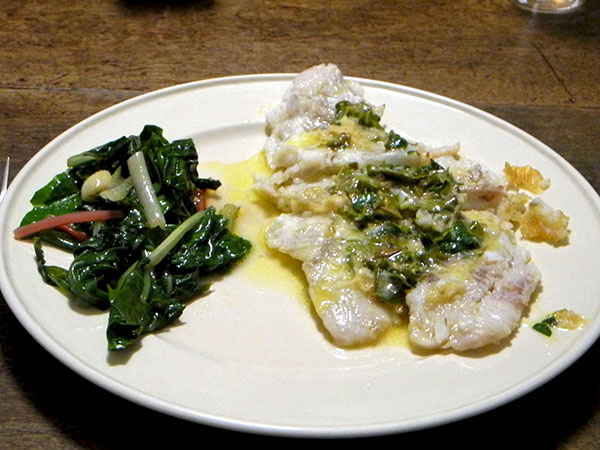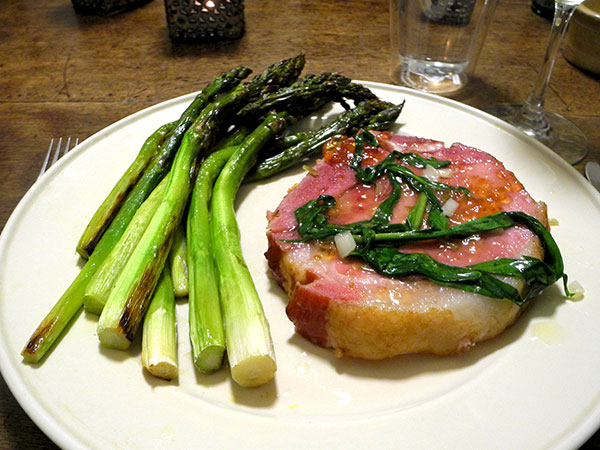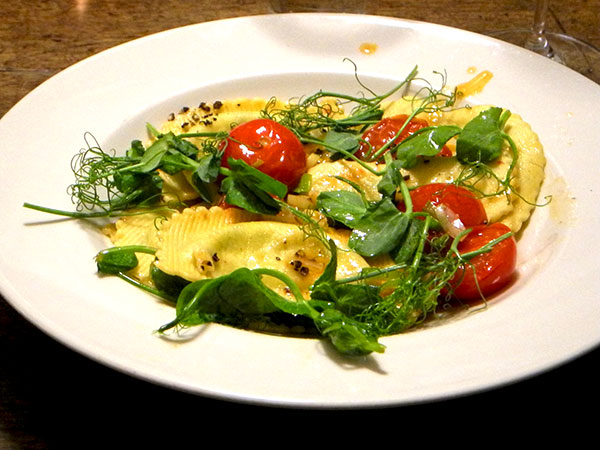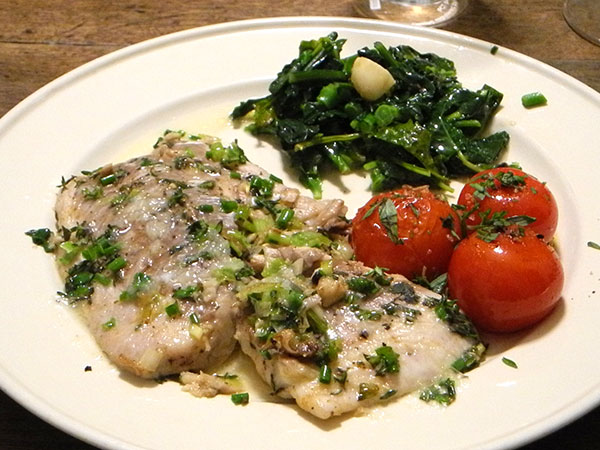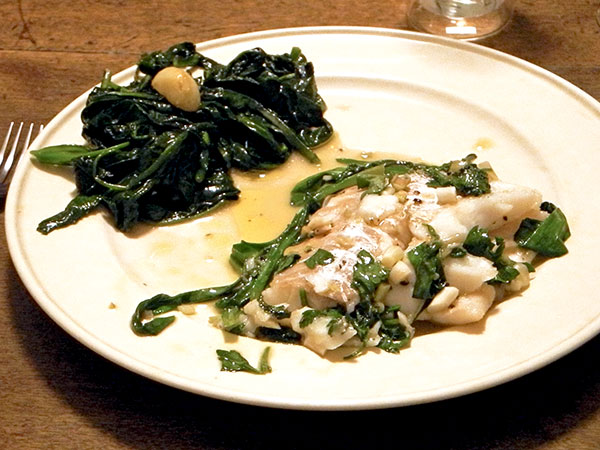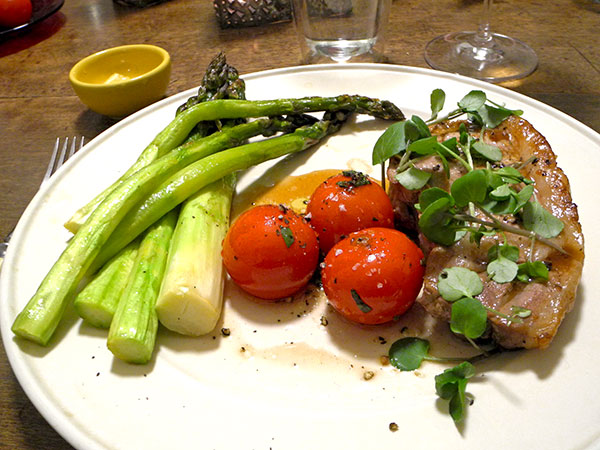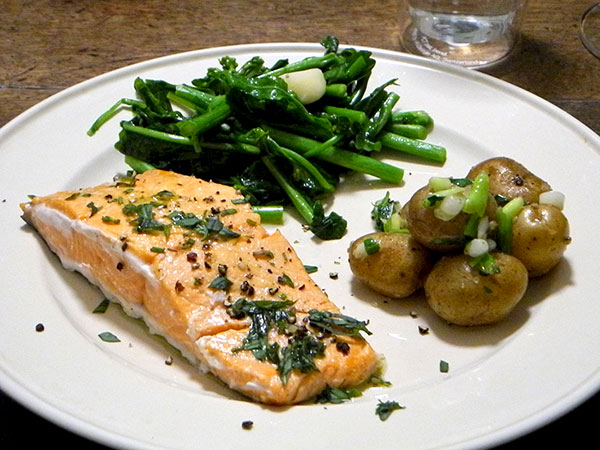Note to self: There certainly must be exceptions, and skate seems to be one of them, but, when it comes to fish, smaller is not necessarily better.
Having arrived there late on a Monday, when both custom and merchandise is smaller in size than on any other market day, I missed out on anything which might have meant putting anything less familiar on our table than flounder, which of course remains a most estimable fish.
- six small flounder fillets from P.E. & D. D. Fish Company (a total of about one pound), rinsed, dried, sprinkled with white vinegar and salt, lightly-floured and sautéed in oil, removed from the pan, at which time butter and lemon juice were introduced, scraped together and gently warmed, followed by some fresh chopped parsley from Rogowski Farm and an equal amount of sorrel from Lani’s Farm,also chopped, the finished sauce poured over the fillets
- white and red chard from Lani’s Farm, sautéed with olive oil and finished withs lemon, crushed dried hot pepper seeds, salt, pepper, and olive oil
- the wine was a California white, S + A Verdelho Calveras County 2014
- the music was eighteenth-century instrumental works by Carl Philipp Emanuel Bach and Carl Heinrich Graun
